Spotlight on Ray Whitehouse
Jan 16, 2016
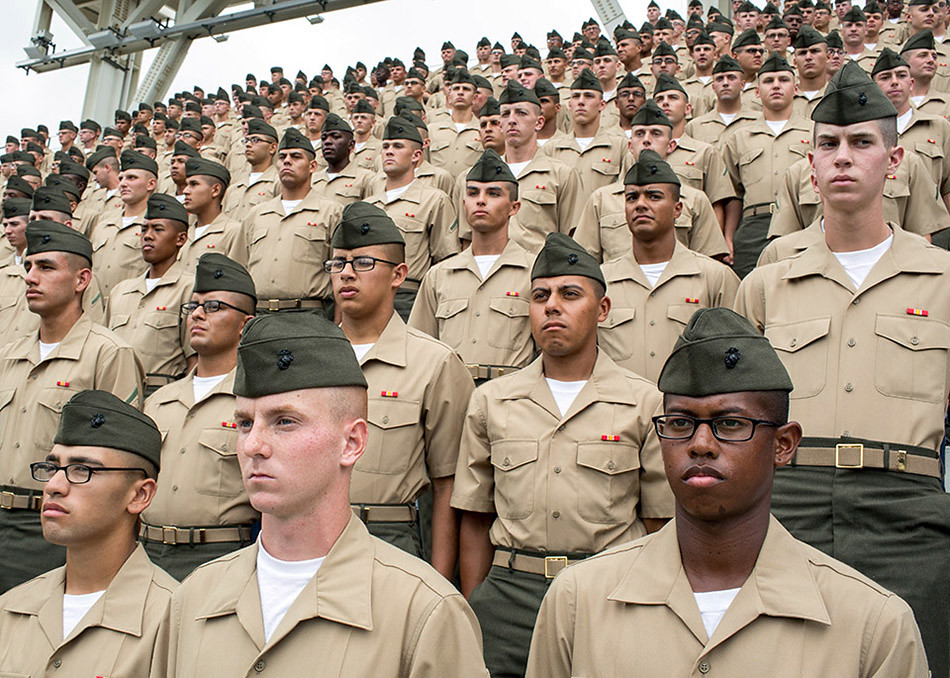
TID:
Thanks for being open to this, Ray, can you tell the back story to the image?
RAY:
Thank you for the opportunity to be a part of TID! This image, which was made at a San Diego Padres game, comes from a trip I made in 2014 to photograph a game at all 30 Major League Baseball stadiums.
TID:
This project was self-funded and had a large scope to it; can you talk about your motivation to do this?
RAY:
Visiting all the stadiums had been a dream of mine for as long as I can remember. I started playing baseball when I was very young and fell in love with the game soon thereafter. It will forever be a part of my identity, albeit in different ways than when I was younger. One of my early childhood memories is playing catch in the sweltering summer heat with my dad in the alley behind my parents’ house in Chicago. We’d often throw after the sun had set and the ball was illuminated only by the nearby sodium vapor streetlights. The balls never lasted very long because my erratic throws would often hit the asphalt and scuff the leather. In high school, I played at Wrigley Field twice. Before I broke my ankle as a sophomore, my dream, like many others, was to play professionally.
In late March of 2014, I had a few long conversations with Bruce Strong. He offered me some advice and recommended that I read the book, A Million Miles in a Thousand Years by Donald Miller. His advice was to actively decide how to live my life and the book offered a strategy to put that advice into practice. In the book, Miller writes about the experience of having other people write a screenplay about his life.
He’s initially offended when the writers eliminate large chunks of his life, but as the writing process continues, Miller comes to realize that he is often boring and many details in his life don’t further the narrative of his story on the screen. His realization leads to an epiphany, which is that one’s life can also be viewed as a story and to live a meaningful life is to create a life that has a strong narrative arc and includes transformation.
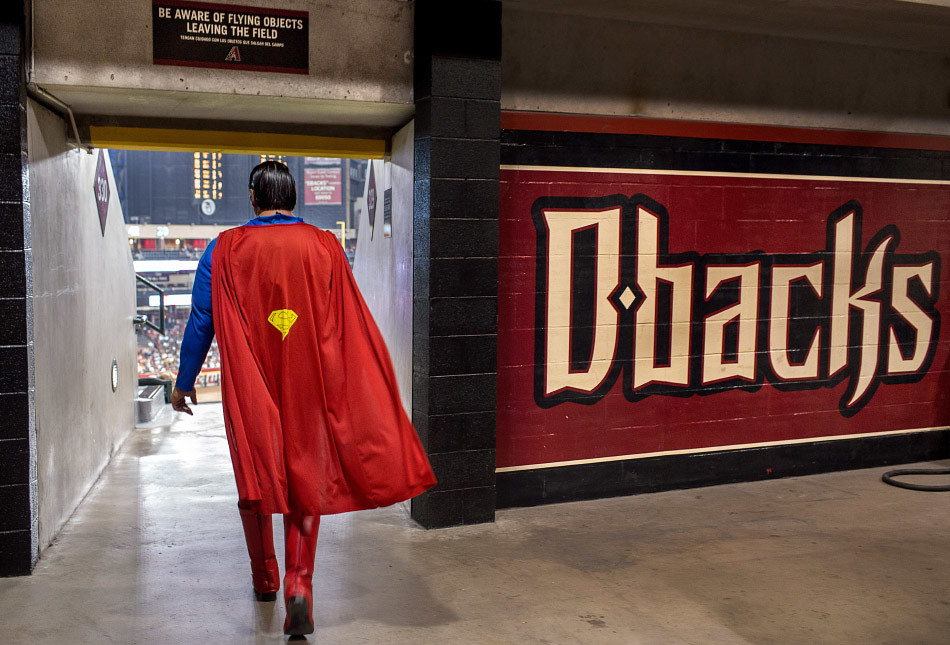
Miller writes, “If what we choose to do with our lives won’t make a story meaningful, it won’t make a life meaningful either.” Miller’s declaration, combined with Bruce’s advice, had a profound impact on me. I knew I would have a window of time between June and the start of graduate school in late August. I decided that the best way to live a meaningful story in that period, would be to accomplish one of my dreams: visiting every major league baseball stadium.
I have led a life of privilege and to do this trip was absolutely a privilege. Apart from fulfilling my dream, I was driven to create an admittedly subjective yet visually engaging record for those who might want to visit all 30 stadiums but couldn’t. In addition, if the project ever made money, I committed to donating all profits to the scholarship fund of a program that helped me when I was younger: MLB's Reviving Baseball in Inner Cities program.
TID:
What sort of planning did you do in preparation for this project?
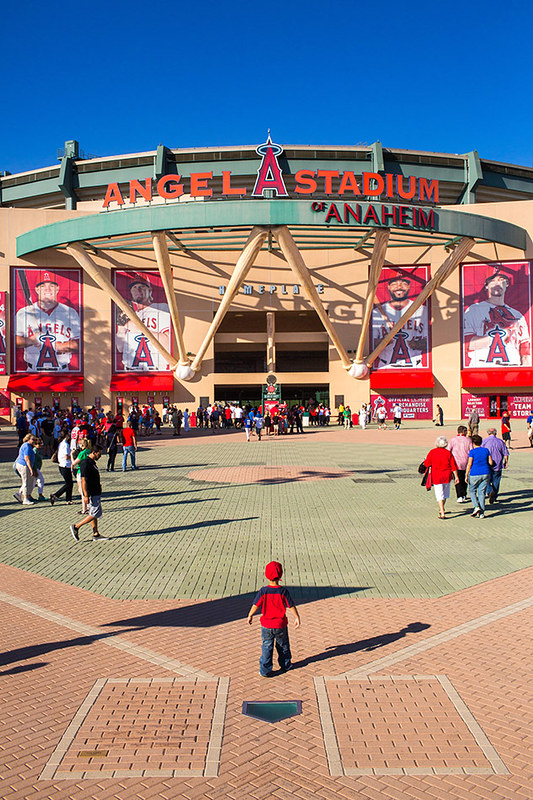
RAY:
Planning this trip took a lot of work but I didn’t do it alone. I’m grateful to everyone who helped me make this trip happen. The first thing I needed to do was figure out if I could logistically make the trip happen. I printed out a composite schedule which included every major league game and attempted to formulate a schedule in which I could visit all 30 stadiums between May 1 and August 9, two days before I needed to be at UNC Chapel Hill for my grad school orientation.
Pencil in hand, I started circling games that might fit my scheduling constraints. On the evening of May 9, 2014, after a lot of erasing and re-circling and many conversations with my parents and my girlfriend Carolyn Van Houten, I officially committed to making the trip happen.
I decided to break the trip up into two parts. The first part would be day or weekend trips to photograph the nine teams within driving distance of Chicago. The second part would be a 21-stadium journey in which I traveled from one major league city to the next. After too many revisions to count, I came up with this schedule:
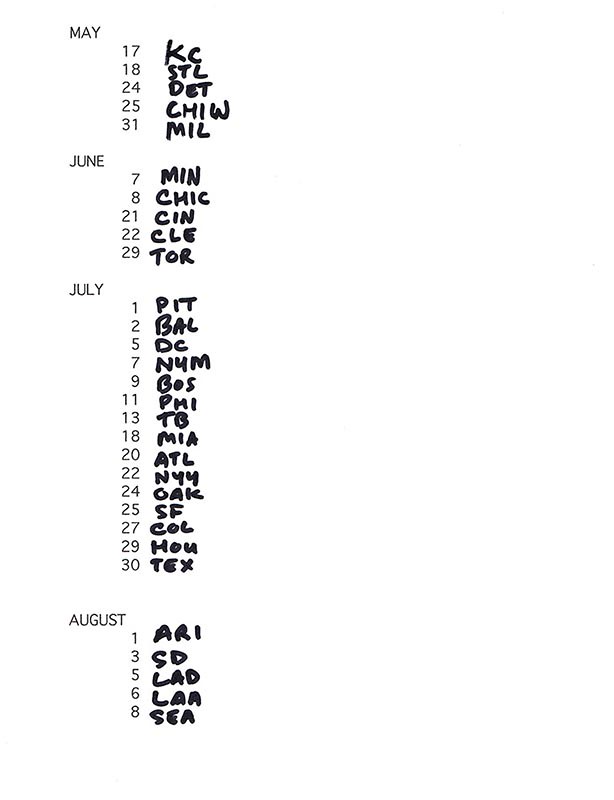
After firming up a schedule, I had to fund the trip, make travel arrangements, decide upon image presentation and buy tickets. Travel was the largest cost of the trip. The driving factor in all my travel decisions was minimizing cost given my time constraints. Sometimes that meant driving. Other times, that meant taking buses, trains, or airplanes. Researching the most cost effective options for my trip was admittedly somewhat tedious but also really fun because I was essentially responsible for planning the trip of a lifetime.
I’m so lucky to have friends and family who housed me and showed me around during the project. A huge thank you goes out to Sean, Mike, Skip, Matt, Victor, Peter and Eileen, Ben, Scott, Jesus, Eve, Carolyn, Dan, Connor, Erin, Pete, Ed, Jared, Nick, Patrick, Tim, Robbie, and Ian. Because of my friends, I stayed in just three hotels on the whole trip. This trip was an opportunity to make photographs but also reconnect with people who I don’t see that often.
I created a website to host my images from the trip, show my schedule and explain why I was doing to the trip. I decided upon American Baseball Journal as my title. I thought I might have some luck in requesting a credential that allowed me to roam but not shoot at the field level, but of the teams I reached out to, many didn’t respond and the rest said no. As such, I bought the cheapest ticket I could to every game.
Sometimes I scalped tickets. Other times I went through the box office and most frequently, I bought tickets on StubHub. For weekday games, I often found seats in the upper deck for less than 10 dollars. In addition, there were two instances in which I received free tickets and I am grateful to David and David for their generosity! Both games were part of Derek Jeter’s farewell tour last season and I would have had to pay a ton to attend those games.
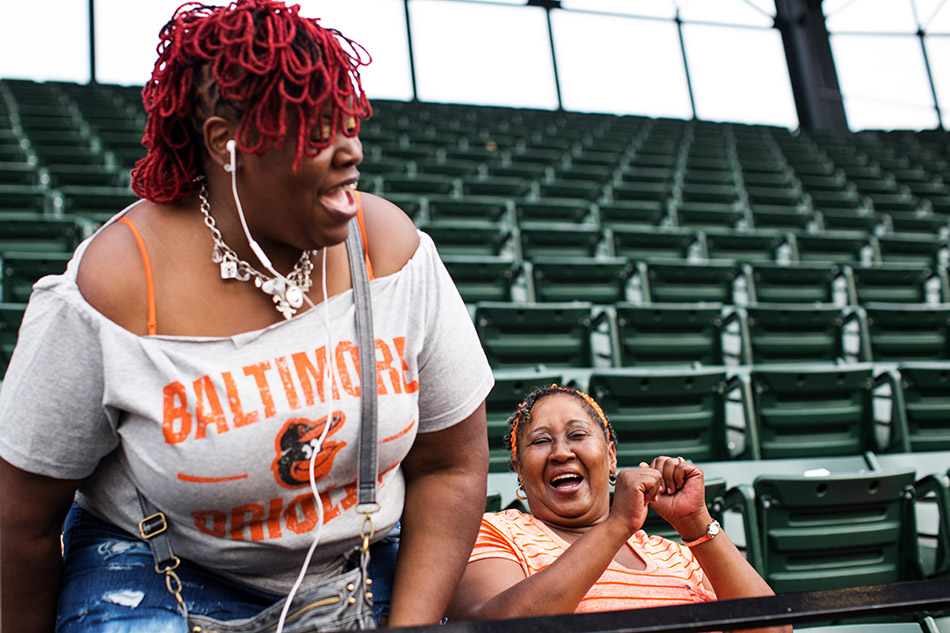
Funding the project came from two main sources. The first was personal savings from my then-current job. The second was through Beacon, a journalism start-up that Dan Fletcher, a friend from Northwestern, started. Thanks to Ari, Brandon, Daniel, Dave, David, Dillon, Eileen, Harry, Howard, Jason, Jay, Jim, Joel, John, Nicole, Peter, Patty, Ryan, Sarah and Scott for supporting me and the project!
TID:
What problems, if any, did you have and how did you overcome them?
RAY:
For logistical and financial reasons, I only had one game to shoot at each stadium. My biggest challenge was coming up with thoughtful ways to photograph the one game I had at each stadium in a way that complemented the other stadiums without being repetitive. I’m not sure of the degree to which I overcame this challenge, but the attempt was thoroughly enjoyable.
I prepared by reading about each stadium in Going Yard: The Ultimate Guide For Major League Baseball Stadium Road Trips, and, when possible, talked with friends who had previously visited or photographed the stadium before. I am thankful for Jonathan Newton taking the time to discuss my project and giving me advice about trying to make pictures that could serve as cultural comparisons in the future. I’m also indebted to Scott Strazzante for his inspirational baseball work and mentorship in the years leading up to shooting this project.
While I did not have credentials for the games, I did not perceive that as a problem, per se. Credentials would have allowed me to better photograph the game action, but my interest in visiting all the stadiums was primarily about the cultural experience of the stadium. I came to view the lack of credentials as a constraint that forced me to be creative. Not having a credential did have its drawbacks, however.
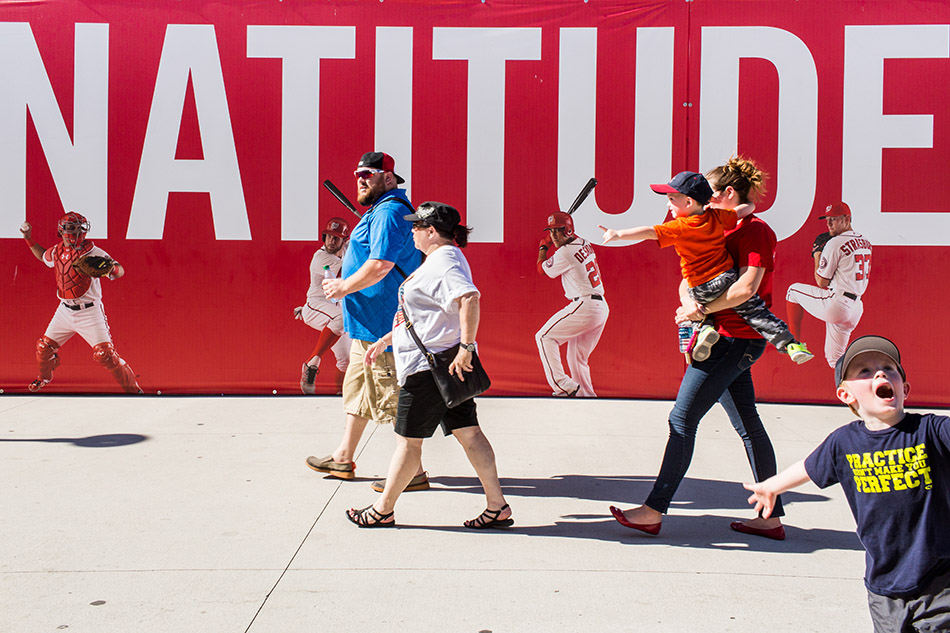
I was not able to move freely around the stadium and ushers would often ask me to move from where I was shooting. They would ask to see my ticket, I’d show it to them, and then they’d tell me that I had to go back to my seat. They were always polite and I always left without any fuss. The predictable nature of these conversations was oddly comforting by the end of the trip.
Editing my takes on the road in between games was difficult. I occasionally went a couple games before finalizing my edits and publishing the pictures online. I am so grateful to Carolyn for so many things and during this trip, one of them was her keen eye in helping with an edit. Armando Sanchez also served as an occasional editor and I’m thankful for his support as well.
TID:
Let’s talk about the publication of the project. How did you navigate this? What did you learn from the process? (how did the rights work out with MLB, etc)
RAY:
Near the end of my trip, I started reaching out to publications to gauge interest in publishing some of the images. One of the people I reached out to suggested that I might want to contact Jeff Furticella at The New York Times. I sent him a note and over the next couple of weeks, we were able work something out. In the end, he did an edit of 30 images that ran as a double truck in the sports section. I’m really grateful to Jeff for the hard work he put into transforming the wide edit I sent him into two amazingly designed pages. I felt a sense of affirmation from being able to find someone interested in publishing a personal project.
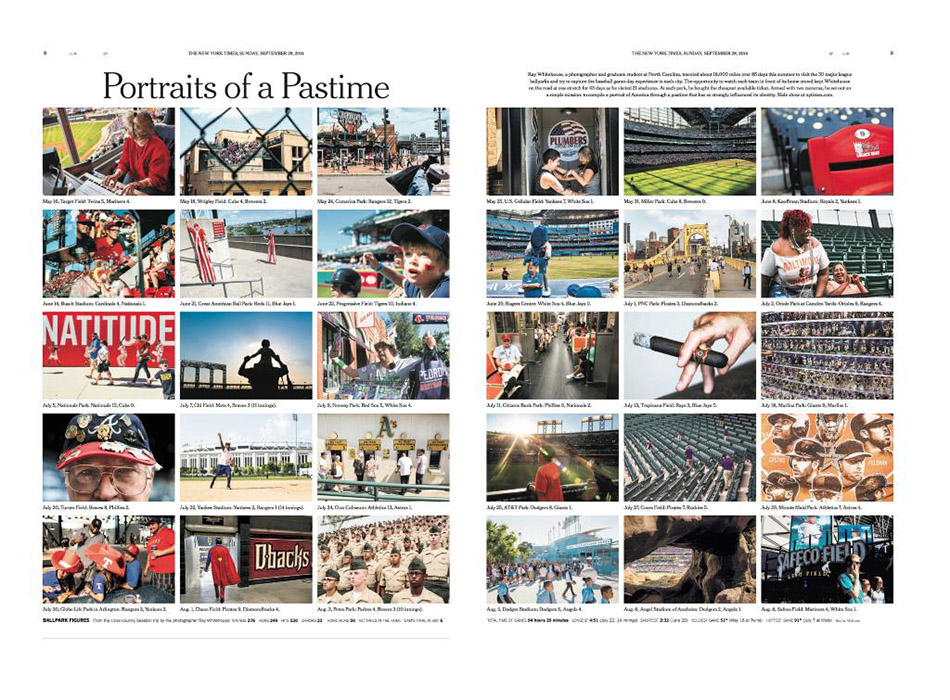
TID:
Now, onto the moment. Please walk us through how you photographed the moment and what was going on in your mind in how you created the image.
RAY:
In researching Petco Park, I learned that at every Sunday home game, the Padres hold military appreciation events and often invite Marine Corps recruits stationed in San Diego to attend for free. These types of promotions are common – for more than 100 years, professional baseball executives have cultivated a relationship with the military and the sport has come represent a patriotic cultural practice. That said, both the frequency of the events and the number of military personnel invited is uncommon in baseball. The robustness of the Padres’ promotions likely stems from San Diego’s role as home to all of the Navy’s amphibious ships on the west coast and more than half of the U.S. Pacific Fleet surface combat ships. The photo is an attempt to creatively recognize the Padres’ uncommon commitment to the military and reference baseball’s long history with the military.
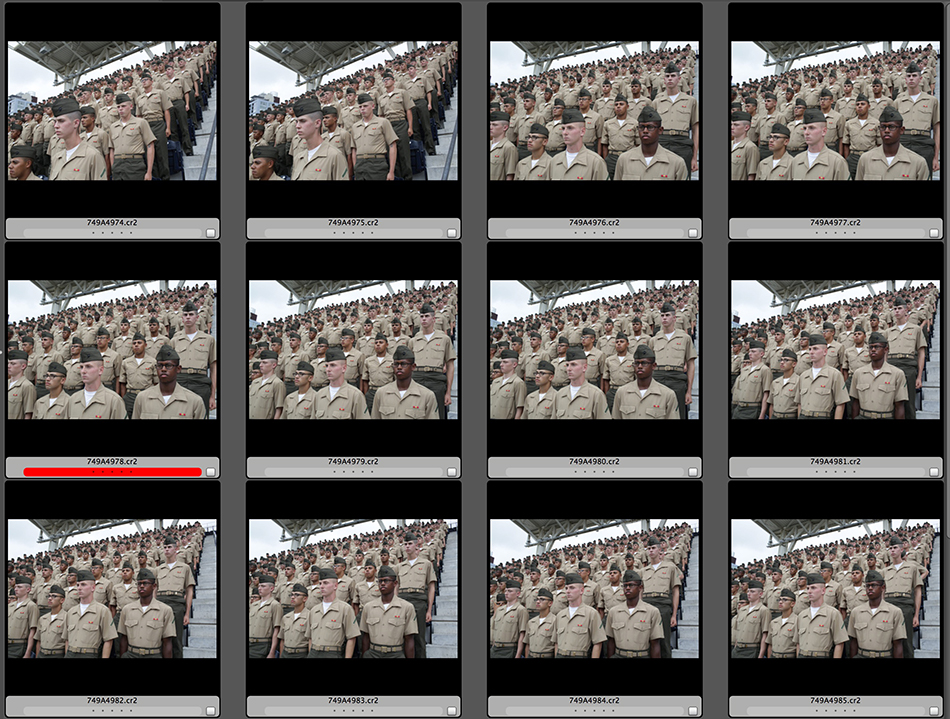
TID:
In conclusion, what advice do you have for photographers wanting to do this type of work?
RAY:
I hesitate to give advice because, I’m not sure my path is one that others would want to follow or one that I’d recommend to others. With that said, I have one observation that I’d like to share. All of the self-assigned work I have done, including this project, stems from questions (and emotions) created by the formative experiences I’ve had in my life. With the first few projects I shot, I was not aware of this phenomenon. It was subconscious. With time, I started to notice that I was drawn to certain ideas and people more than others. The unifying factor to the work I wanted to do was elated to my formative life experiences.
This realization was not overnight and it was often only after I was done working on something that I realized which experiences it was motivated by. Now, I’m working on being aware of how my life experiences impacted me, so that I can better identify projects that would be both fulfilling personally and informative and thoughtful contributions to visual consumers. Perhaps the ideas I’ve advanced may be helpful to photographers in figuring out how they want to approach their next project.
This observation is not to suggest that photography is a solipsistic endeavor. Instead, it’s about recognizing that objectivity doesn’t exist and then collaborating with individuals in a way in which they understand your subjective motivations for spending time with them. Making work in this manner feels more honest and respectful to me because the people I’m spending time with have an intimate idea of who I am.
What’s exciting about this insight for me is that it means all photographers are uniquely qualified to work on certain things based on who they are. What is frustrating, however, is that there is a lack of diversity in the photojournalism community that makes it difficult for certain people to break into the industry and share the things they’re uniquely qualified to work on. I hope that the photojournalism community can become more diverse not only because it’s simply the moral thing to do, but because there are so many stories that the world should have a chance to engage with.

:::BIO:::
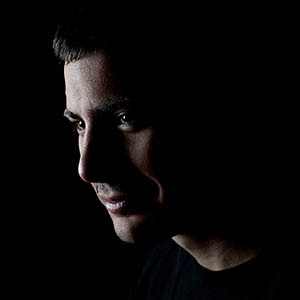
photo by: Carolyn Van Houten
Ray Whitehouse is a maker of pictures and videos with an interest in American politics and history. He holds a BSJ from Northwestern University and is currently pursuing a master's degree in visual
journalism at the University of North Carolina at Chapel Hill. A native of Chicago, he's worked as a multimedia producer for The Institute of Politics at the University of Chicago and interned at four newspapers.
You can see more of his work here: